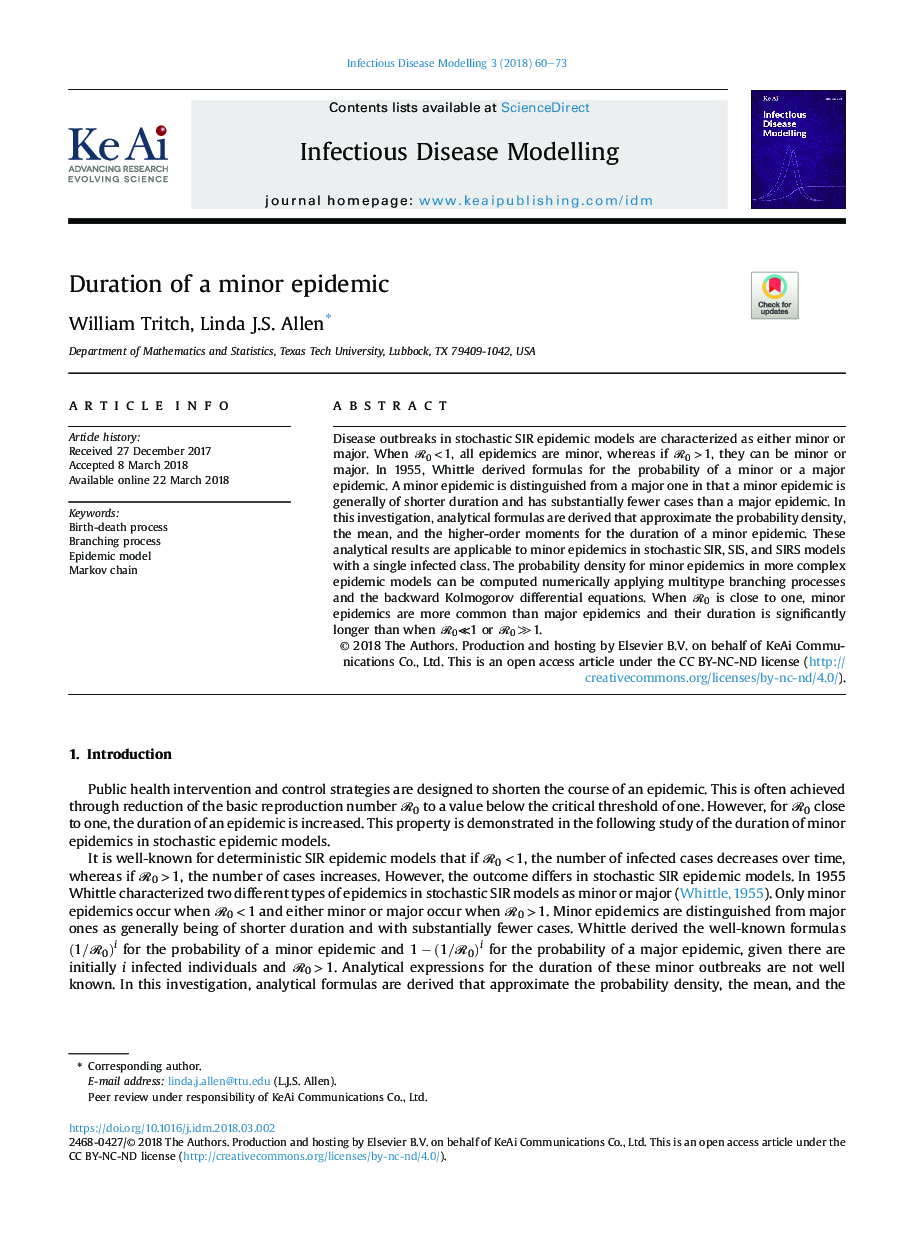| Article ID | Journal | Published Year | Pages | File Type |
|---|---|---|---|---|
| 8733272 | Infectious Disease Modelling | 2018 | 14 Pages |
Abstract
Disease outbreaks in stochastic SIR epidemic models are characterized as either minor or major. When â0<1, all epidemics are minor, whereas if â0>1, they can be minor or major. In 1955, Whittle derived formulas for the probability of a minor or a major epidemic. A minor epidemic is distinguished from a major one in that a minor epidemic is generally of shorter duration and has substantially fewer cases than a major epidemic. In this investigation, analytical formulas are derived that approximate the probability density, the mean, and the higher-order moments for the duration of a minor epidemic. These analytical results are applicable to minor epidemics in stochastic SIR, SIS, and SIRS models with a single infected class. The probability density for minor epidemics in more complex epidemic models can be computed numerically applying multitype branching processes and the backward Kolmogorov differential equations. When â0 is close to one, minor epidemics are more common than major epidemics and their duration is significantly longer than when â0âª1 or â0â«1.
Related Topics
Health Sciences
Medicine and Dentistry
Health Informatics
Authors
William Tritch, Linda J.S. Allen,
